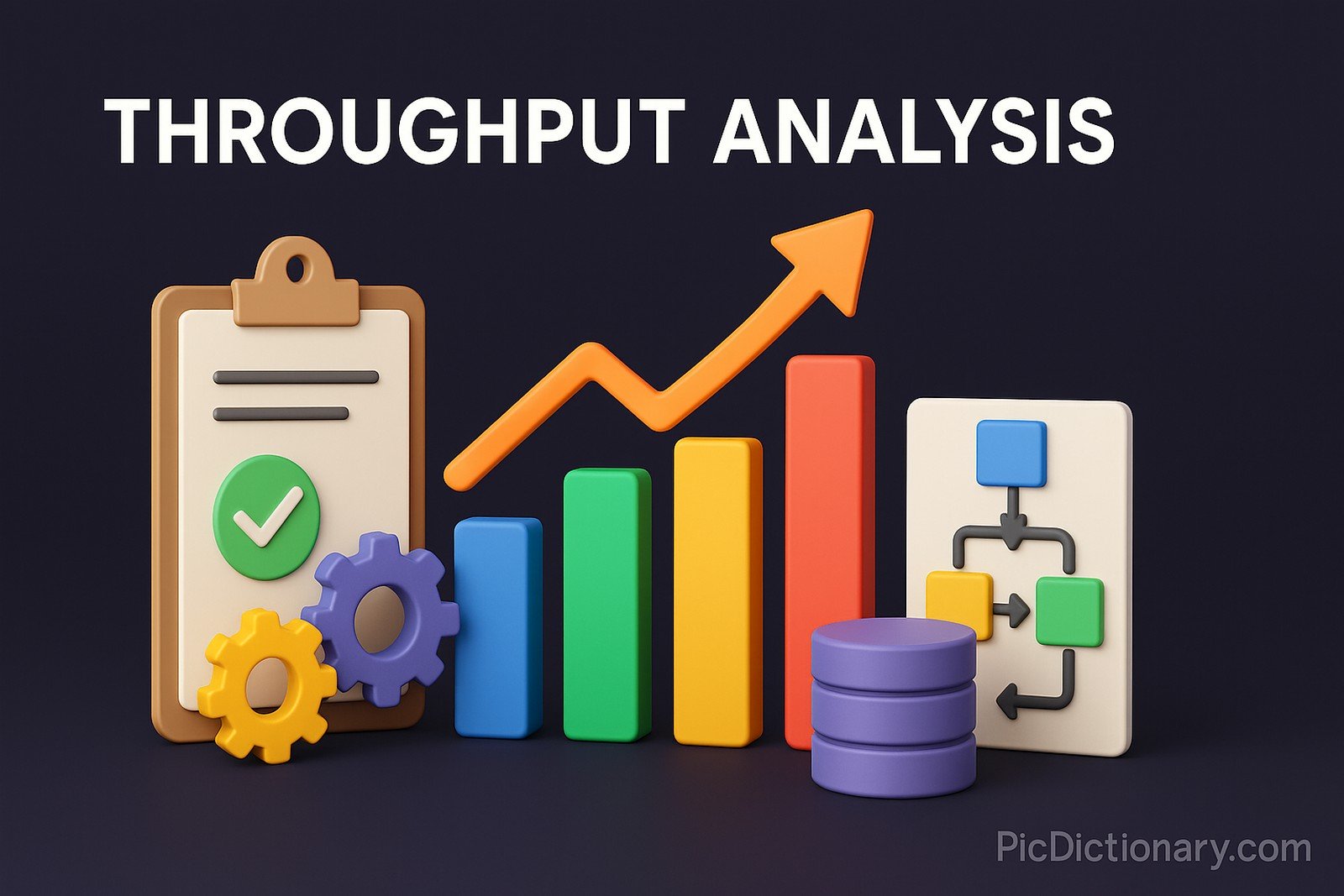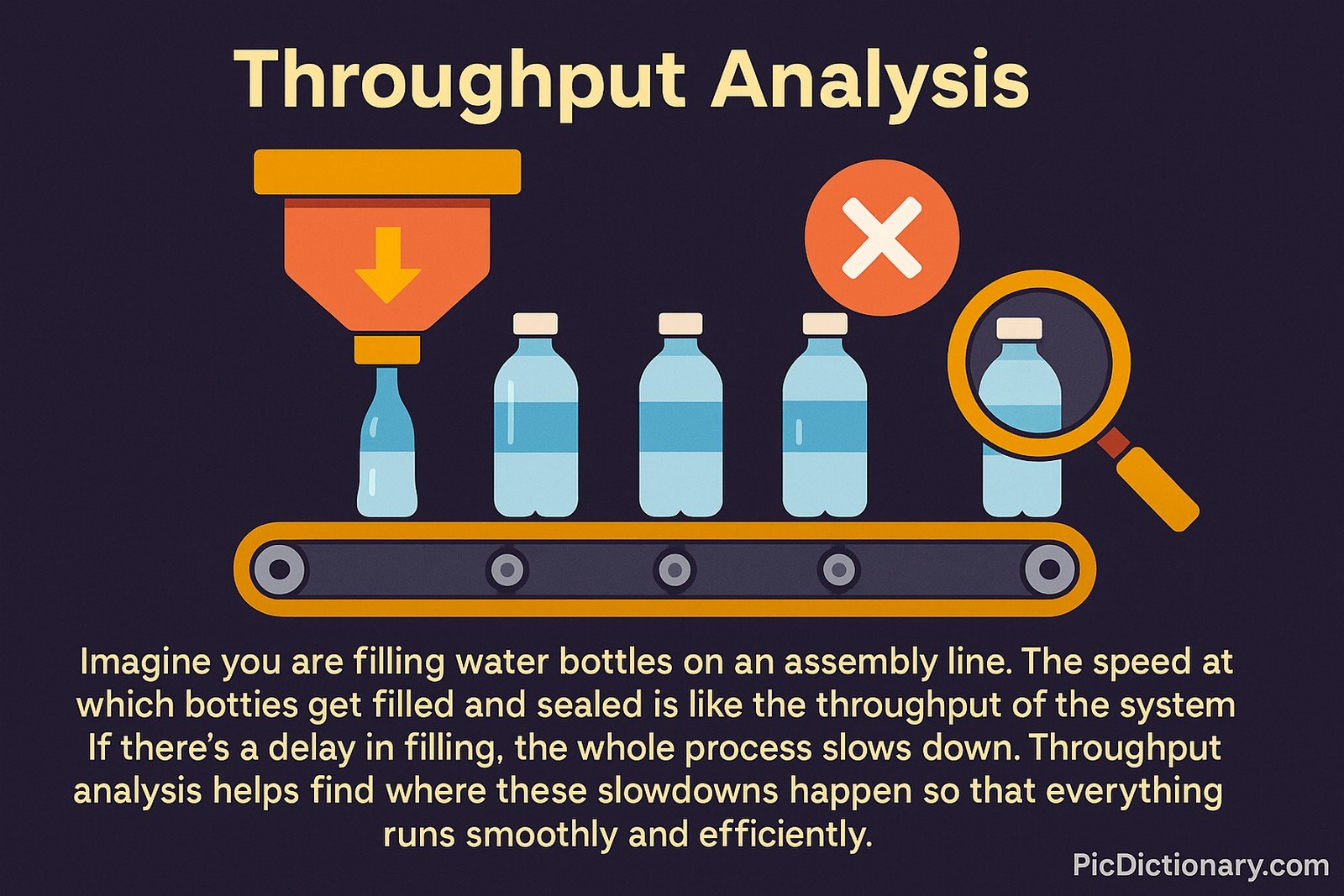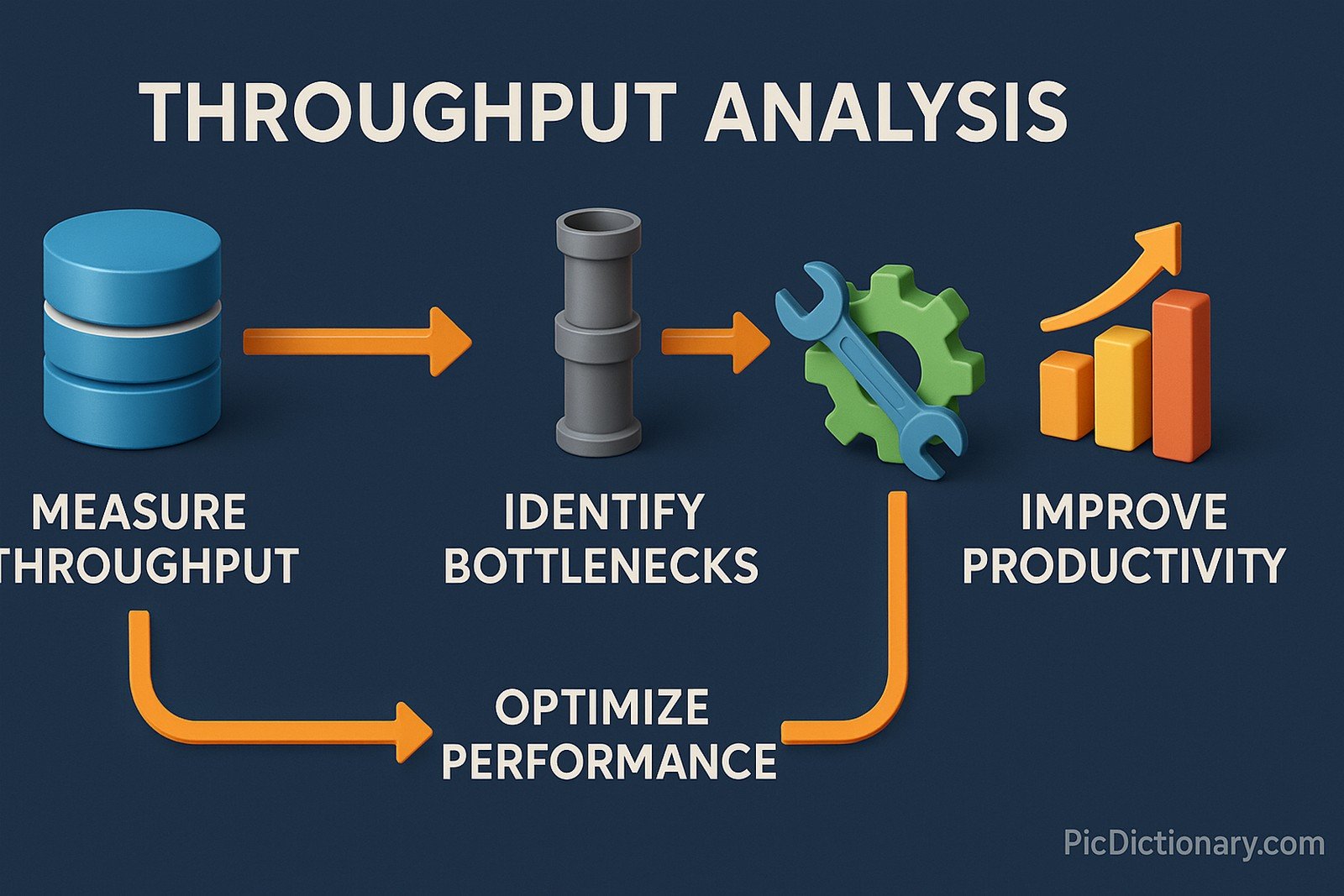Throughput Analysis

Quick Navigation:
- Throughput Analysis Definition
- Throughput Analysis Explained Easy
- Throughput Analysis Origin
- Throughput Analysis Etymology
- Throughput Analysis Usage Trends
- Throughput Analysis Usage
- Throughput Analysis Examples in Context
- Throughput Analysis FAQ
- Throughput Analysis Related Words
Throughput Analysis Definition
Throughput analysis is the process of measuring and evaluating the rate at which a system processes data, transactions, or operations over time. It is commonly used in computer networks, database management, and manufacturing to determine system efficiency. By analyzing throughput, organizations can identify bottlenecks, optimize performance, and improve overall productivity. Key metrics in throughput analysis include data transfer rates, transaction speeds, and system response times.
Throughput Analysis Explained Easy
Imagine you are filling water bottles on an assembly line. The speed at which bottles get filled and sealed is like the throughput of the system. If there’s a delay in filling, the whole process slows down. Throughput analysis helps find where these slowdowns happen so that everything runs smoothly and efficiently.
Throughput Analysis Origin
The concept of throughput analysis emerged in the mid-20th century with the rise of computing and industrial automation. As businesses sought ways to maximize efficiency, throughput became a critical performance metric across various industries. Early computing systems relied on throughput analysis to measure processing speeds and optimize resource allocation.
Throughput Analysis Etymology
The word "throughput" originates from the combination of "through" (indicating movement) and "put" (suggesting placement or processing). It signifies how much work passes through a system within a given timeframe.
Throughput Analysis Usage Trends
Throughput analysis has become increasingly vital in modern computing, cloud infrastructure, and high-speed networking. With the rise of big data and real-time applications, businesses leverage throughput analysis to ensure seamless operations. Industries such as finance, e-commerce, and telecommunications rely on throughput metrics to maintain fast and reliable services.
Throughput Analysis Usage
- Formal/Technical Tagging:
- Performance Optimization
- System Efficiency
- Network Throughput - Typical Collocations:
- "throughput optimization"
- "network throughput analysis"
- "database throughput monitoring"
- "high-throughput computing"
Throughput Analysis Examples in Context
- A cloud computing provider analyzes throughput to optimize server load balancing.
- Network administrators use throughput analysis to detect slowdowns and prevent congestion.
- E-commerce websites monitor throughput to ensure quick transaction processing during peak hours.
Throughput Analysis FAQ
- What is throughput analysis?
Throughput analysis evaluates how efficiently a system processes data, transactions, or tasks over time. - Why is throughput important in computing?
It determines the speed and efficiency of networks, databases, and applications, impacting overall system performance. - How is throughput measured?
Throughput is typically measured in units per second, such as transactions per second (TPS) or megabits per second (Mbps). - What factors affect system throughput?
Factors include network bandwidth, processing power, system latency, and hardware constraints. - What tools are used for throughput analysis?
Tools like Wireshark, Apache JMeter, and performance monitoring software help analyze throughput. - Can throughput analysis improve network performance?
Yes, it helps identify bottlenecks and optimize resource allocation for faster data transmission. - How does throughput relate to latency?
While throughput measures speed, latency refers to delay; high latency can reduce overall throughput. - Is throughput analysis relevant in cloud computing?
Absolutely. It ensures cloud resources are used efficiently and prevents service slowdowns. - How does throughput impact business operations?
Faster transaction speeds and efficient data handling lead to improved user experience and productivity. - What industries rely heavily on throughput analysis?
Sectors like telecommunications, banking, e-commerce, and data centers use throughput analysis extensively.

Throughput Analysis Related Words
- Categories/Topics:
- Computer Networks
- Performance Engineering
- Data Processing
Did you know?
In 2010, researchers at MIT used throughput analysis to improve internet data transmission speeds, leading to faster broadband and streaming services. This innovation significantly reduced buffering times for online videos.
PicDictionary.com is an online dictionary in pictures. If you have questions or suggestions, please reach out to us on WhatsApp or Twitter.Authors | Arjun Vishnu | @ArjunAndVishnu

I am Vishnu. I like AI, Linux, Single Board Computers, and Cloud Computing. I create the web & video content, and I also write for popular websites.
My younger brother, Arjun handles image & video editing. Together, we run a YouTube Channel that's focused on reviewing gadgets and explaining technology.



Comments powered by CComment